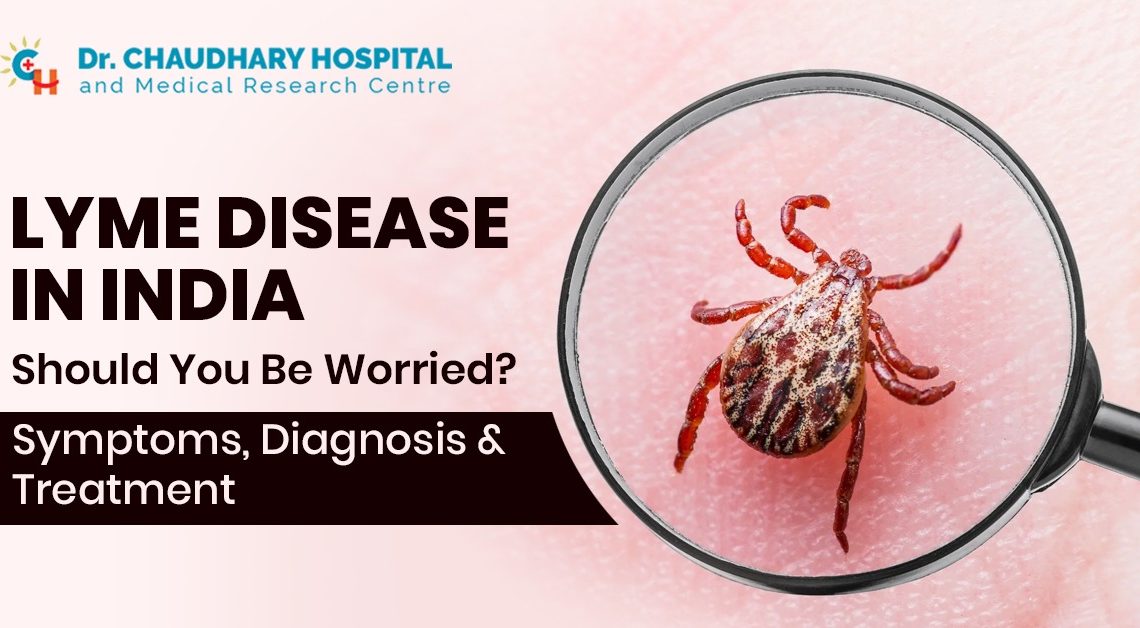Lyme disease is caused by the bacterium Borrelia burgdorferi and is typically transmitted through bites from infected black-legged ticks (commonly known as deer ticks) and can be carried by various small animals such as mice, squirrels, and birds. It is predominantly found in temperate forested areas of North America and Europe.
An estimated 3,000 to 5,000 cases are reported in India, whereas it is much more prevalent in the United States. A recent study conducted by researchers in the U.S. Although India has reported cases of Lyme disease, it remains relatively uncommon compared to other tick-borne diseases.
What is Lyme Disease?
Lyme disease is caused by the bacterium Borrelia burgdorferi and is spread by ticks, specifically those from the Ixodes species. The presence of this disease worldwide aligns with the geographic distribution of these ticks. The bacterium is commonly hosted by small animals such as mice, squirrels, and birds. Ticks contract the bacteria when they feed on these infected animals, and then they can pass it on to humans. Deer are also known to be a major natural reservoir for Lyme disease.
Lyme disease affects multiple parts and organs within the body and can cause a variety of skin problems. Skin lesions are often the first sign of the disease, making their early detection key for timely diagnosis and treatment. This early intervention is crucial to prevent more severe, widespread complications in the body.
Should you be worried about Lyme disease in India?
The risk of contracting Lyme disease in India is generally low, but increasing global travel and ecological changes could potentially alter the presence of tick populations and increase the risk over time. It’s important to be aware of the disease, particularly if you are traveling to known endemic areas in the U.S., Europe, or other parts of the world where Lyme disease is more common.
Reports suggest that there are only around 5,000 cases of Lyme disease in India, with many studies pointing to a lack of awareness as a key reason for this. According to a 2022 report in the Medical Journal Armed Forces India, the disease often goes undetected due to its varied symptoms and clinicians not considering it as a potential diagnosis. That is why the exact number of disease reports cannot be noted. Additionally, the report states that while Ixodes ticks, which can transmit Lyme disease, are found in the Himalayan region of India, no specific tick species has yet been identified as a carrier for Lyme disease in the country. Furthermore, there is a lack of information about which animal hosts might be part of the disease cycle and the specific strains of Borrelia bacteria present in India.
What are the Symptoms of Lyme Disease?
Lyme disease, known as the “great imitator,” causes over 300 different symptoms. A cardiac complication linked to Lyme disease was recently identified in a patient from Bengaluru, Karnataka. Lyme disease symptoms can vary but typically develop within days to weeks after a tick bite. The key symptoms include:
- Erythema Migrans (EM) rash: Often one of the first signs, appearing at the site of the tick bite after about 7 to 14 days. The rash generally expands gradually and can sometimes clear as it enlarges, forming a bull’s-eye pattern.
- Flu-like symptoms: Fever, chills, fatigue, body aches, and a headache may accompany the rash.
- Neurological problems: Weeks to months after an untreated infection, symptoms like meningitis, facial palsy, and neuropathy may occur.
- Arthritic symptoms: Several months after a bite, severe joint pain and swelling, particularly in the knees or other large joints, can develop.
- Cardiac issues: Rarely, Lyme disease can lead to heart problems, such as Lyme carditis, which might affect heart rhythm.
Diagnosis of Lyme Disease
Lyme disease is diagnosed based on symptoms, physical findings (e.g., rash), and the possibility of exposure to infected ticks. Laboratory testing can be helpful in the later stages of the disease but is more commonly used in countries where Lyme is prevalent. Typical tests include:
Enzyme-linked immunosorbent assay (ELISA): A test to detect antibodies
Western blot testing: Used to confirm a positive ELISA test result.
Treatment of Lyme Disease
Lyme disease is generally treatable at all stages with appropriate antibiotic therapy, often resulting in a full recovery. The common antibiotics used include:
- Doxycycline
- Amoxicillin
- Cefuroxime axetil
- For more severe cases, intravenous antibiotics such as ceftriaxone may be used.
Prevention Tips
Preventing tick bites is key to avoiding Lyme disease:
- Avoid wooded and brushy areas with high grass.
- Use insect repellent containing DEET on skin and clothing.
- Wear protective clothing such as long sleeves and pants.
- Regularly check for ticks after spending time in tick-infested areas.
- Keep your yard clean and free of tall grasses and brush.
Given the rarity of Lyme disease in India, it is important to consider other more prevalent diseases if you experience similar symptoms after a tick bite. Always consult healthcare professionals for a proper diagnosis and treatment plan. If you travel to a region where Lyme disease is common, the above precautions and awareness of symptoms should be emphasized.
Takeaway
Lyme disease remains under study in India due to limited awareness among both the public and healthcare professionals and the complex characteristics of the disease. Always take proper precautions, maintain hygiene and consult your healthcare professional if you notice any symptoms.


